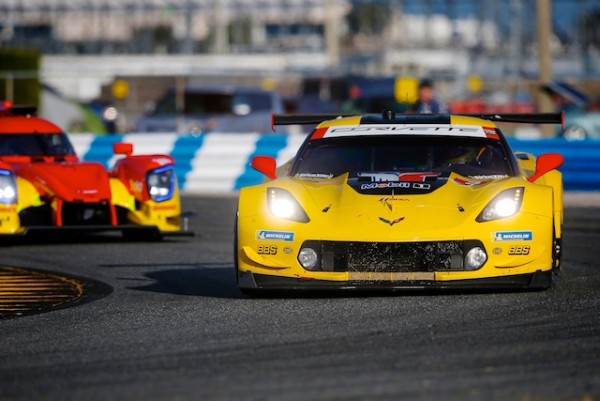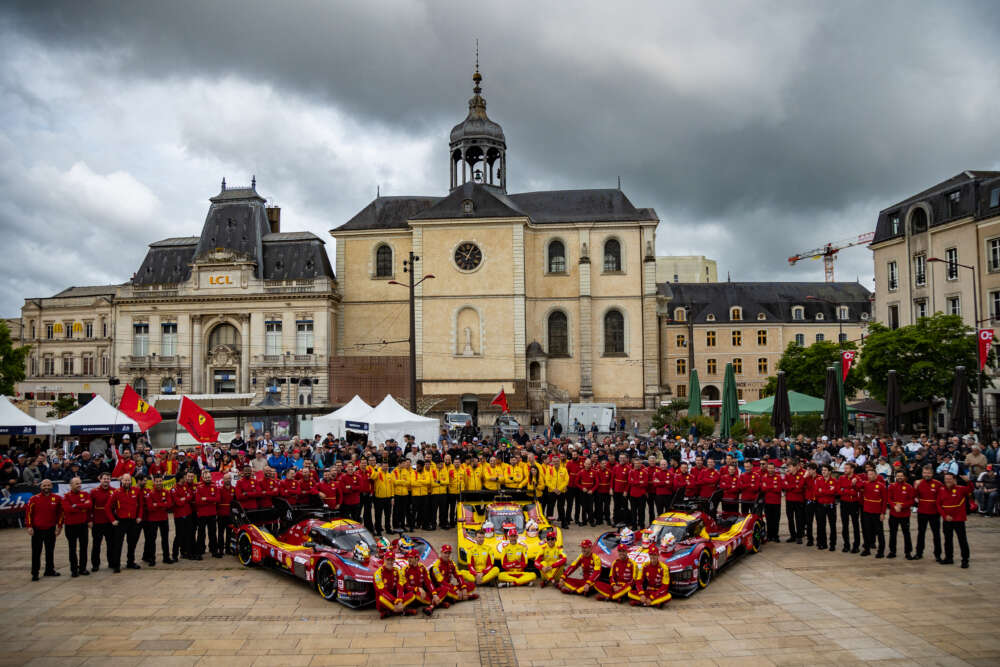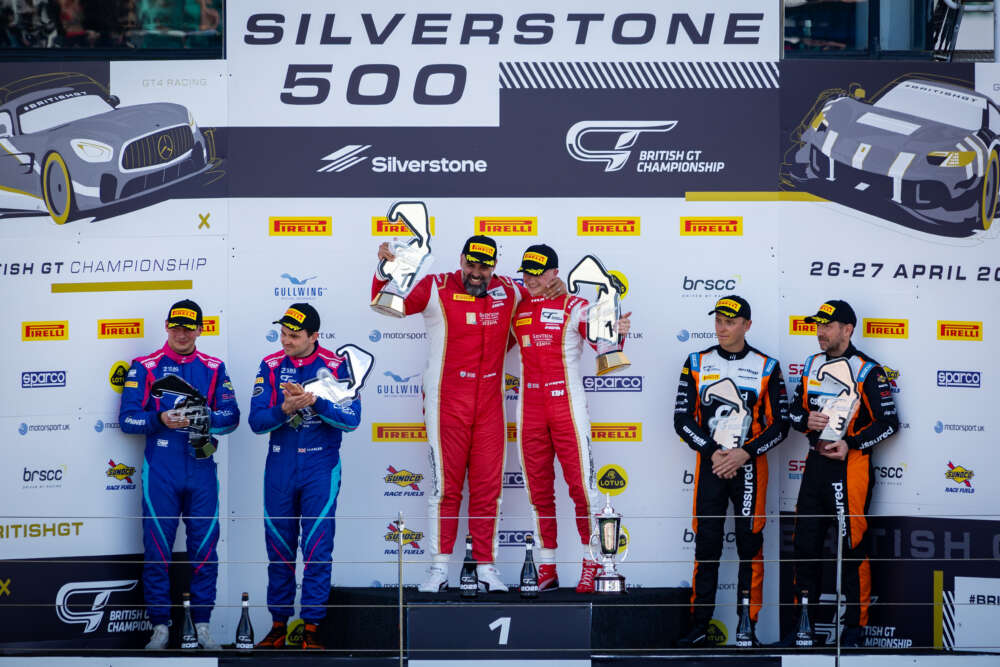CHAMPIONSHIP DEFENSE KICKS OFF AT ROLEX 24 AT DAYTONA FOR JAN MAGNUSSEN

Their championship trophies may still be shining brightly from 2017, but Jan Magnussen, Antonio Garcia and Corvette Racing know last year’s success will count for nothing when the 2018 season commences at Daytona today.
Magnussen and Garcia claimed the GTLM class drivers’ title in the IMSA WeatherTech SportsCar Championship last year with three victories and a string of incredibly consistent performances in every race last year.
The duo’s worst finish for the year was at Long Beach – after Garcia led the race until the final corner, only to find the track completely blocked. The delay pushed him back to fifth.
For 2018, Corvette Racing’s title-winning combo returns as is, with Mike Rockenfeller also stepping back into the third driver role for the endurance events. Both the No. 3 and No. 4 Corvettes (featuring Olivier Gavin, Tommy Milner and Marcel Fassler) are out to chase another title in Corvette Racing’s 20th season of endurance competition in North America.
Increased competition, including updated driver lineups and a new car for BMW, will again force Corvette Racing to be at the top of their game for the season ahead.
In preparation for this weekend’s Rolex 24 at Daytona – a race where the No. 3 Corvette finished fourth last year – the Magnussen/Garcia/Rockenfeller combination recorded a total of 197 laps at the traditional Roar Before the 24 test here in Florida two weeks ago.
Today, the team will return to the track for two practice sessions before qualifying begins at 4:20pm for the GTLM class.
The Rolex 24 at Daytona – a race Magnussen won with Garcia and Ryan Briscoe in 2015 – kicks off on Saturday at 2:40 pm local time.
Jan Magnussen Q&A
Q: Looking forward to Daytona, tell me about the roar test and your thoughts going into the race?
A: “Well, I think we had a good test in the beginning of January. I think it’s going to be a tough race, and it’s shaping up to be a tough season if the competition is as close as it was at the test. I think we have a good chance.
“Usually in the long endurance races we have a good showing because of Corvette Racing and the way the team works with our strategies.
“I think we have strength in the team in knowing what is expected of us in different aspects of the race.
“It will be tough because even if you have the fastest car a lot of other things have to gel before you can win this.”
Q: How beneficial is it coming into the weekend with the same lineup Mike Rockefeller again?
A: “One of our biggest assets is the continuity of the team. Everybody knows what they are supposed to do and we know each other’s strengths and weaknesses.
“We can work with that. There aren’t a lot of question marks in terms of what we have both on the people side, whether it be drivers or mechanics or engineers, or on the car side because we know the car very well.
“But we will keep trying to improve the cars and keep trying to get that little extra out of it.
“There are no big changes from last year, we had a good strong finish and we won a few races during the year.
“I think if we just keep building on that and make small improvements the whole time then we stand a good chance.
Q: Coming in as reigning champions, how much does that help? Do you have to do more of the same and keep punching above your weight?
A: “We are the reigning champions and obviously we would like to win another championship, but that doesn’t count for anything.
“The fact that we are the champions just shows that we had a good season last year. Now we’ll go again and we’ll have to try and improve a little bit and see if we can do it one more time.
“But first up is the Daytona 24 and Sebring after that, two really tough races, but if we can do well here, that will go a long way to start us off on the championship hunt.
Q: How unique is this championship – you’re got 36 hours or racing in the first two rounds, then 100 minutes at Long Beach. All for the same points?
A: “It used to be that there were more points for the endurance races, but that’s not how it is now.
“Every race we do, we need to try and be perfect and get the maximum points that we can, whether it be a 24 hour race, with a whole different strategy or Long Beach where basically you just have to have a quick pit stop – that’s all that matters.
“But here we really have to try and stay out of trouble and find your way through the traffic and make sure there’s no contact.
“Then the last three or four hours of the race you can allow yourself to take some more chances to get those points for the championship.”
Q: The prototype class is far more competitive this year. How will that affect your race?
A: “That’s where the crew comes into the picture, the more information you can have in those situations, the better.
“If you know that there’s a group of three or four prototypes coming, it’s really useful to know the spacing between them.
“You can let two go at a time and then get back on line. That’s a huge help compared to the guys that are out there that are just trying to look at the cars, so the more help you can get from the team the better.
“There are some super fast cars in the prototypes, but there are also a lot of cars where the drivers don’t have a lot of experience in a 24 hour race, especially here at Daytona where you have a lot of opportunities to pass on the oval bit, but on the infield you can pass, but you have to do it in the right spots, or you’ll get yourself in trouble or get somebody else in trouble. “It will be interesting to see how that works out.
“Through practice and the beginning of the race you may have to drive a little bit defensively to show them where they should pass and where they shouldn’t pass so they don’t put you in a situation where you’ll go off the track or damage the car.”
Q: How beneficial these days, compared to when you first started, is it to have the radar system in the car? Particularly here in Daytona, when so much of the running is done at night?
A: “The radar system is fantastic just because it gives you the distance between the cars behind you and how fast they’re going, how fast the closing speed is and what side of the car they’re going to try and pass you on.
“In the daytime, the radar is pretty good, but at night, the mirrors don’t really do anything so that’s where it’s a massive advantage over what we had some years ago.
“Usually, the lights of the cars coming from behind just blind the mirrors or the camera just flares up so the screen is just white. You don’t know how close to you they are, you get a much better picture of what’s going on behind in those situations with the radar and it’s much easier to make the right decisions.”
Source. Paul Ryan Media






















